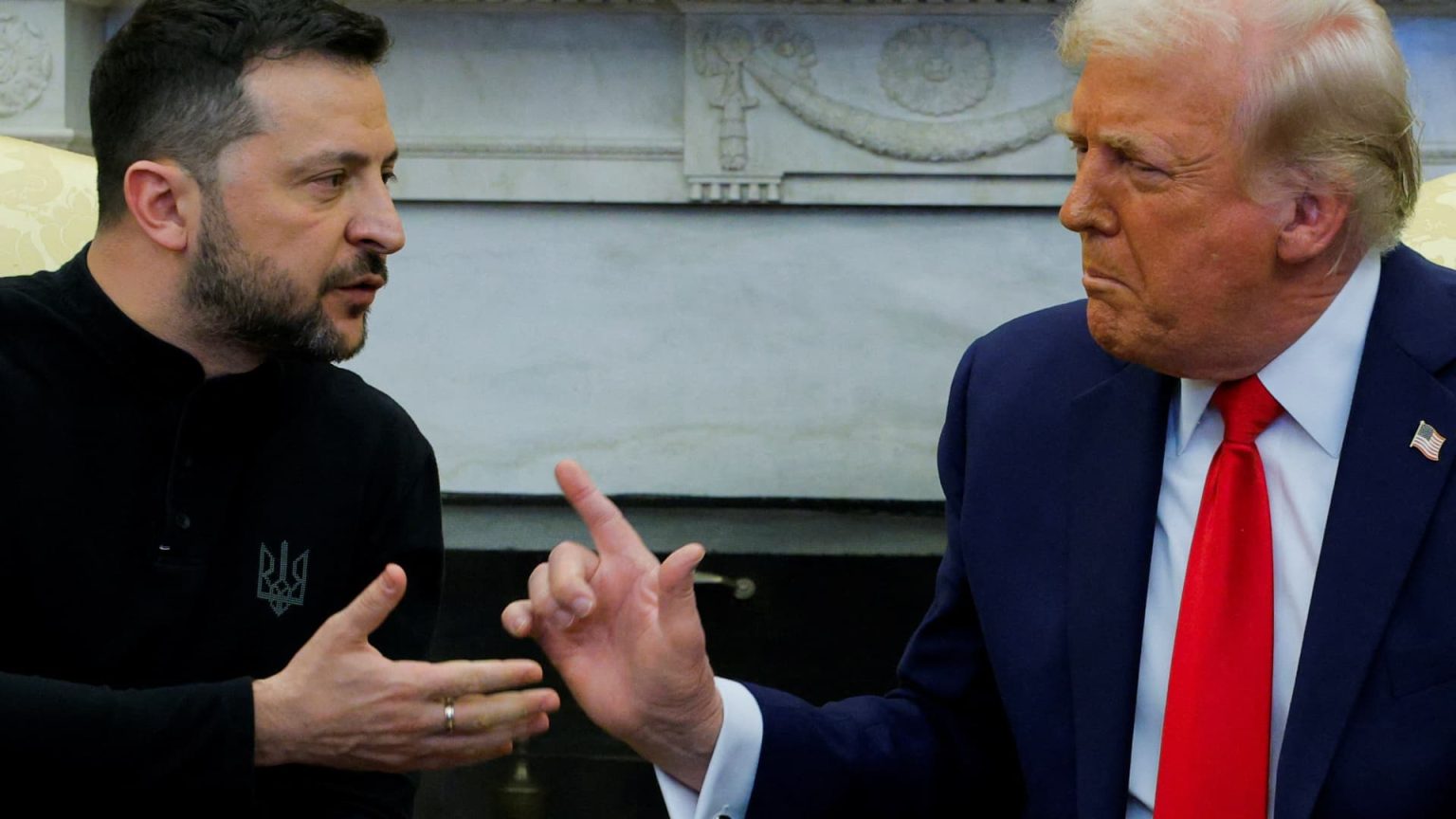A dramatic Oval Office meeting between U.S. President Donald Trump and Ukrainian President Volodymyr Zelenskyy escalated into a confrontation marked by a sharp exchange of words and notable body language on Friday. The discussion, which turned hostile, stemmed from concerns over Russia’s involvement in the conflict in Ukraine. White House officials reported that the meeting concluded abruptly, resulting in a canceled press conference and dinner plans due to tensions arising from the encounter.
| Article Subheadings |
|---|
| 1) Tensions Surface in the Oval Office |
| 2) The Diplomatic Disagreement |
| 3) Dress Code Controversy |
| 4) Historical Context of U.S.-Ukraine Relations |
| 5) Implications for Future Diplomacy |
Tensions Surface in the Oval Office
During a tense meeting in the Oval Office, President Donald Trump reportedly reacted negatively to the demeanor of Ukrainian President Volodymyr Zelenskyy. The meeting was intended to strengthen ties and discuss essential support for Ukraine amid its ongoing conflict with Russia, yet it devolved into a loud argument that underscored deeper diplomatic strains. According to White House Press Secretary Karoline Leavitt, the confrontation stemmed not from specific remarks made by Zelenskyy but rather from his tone and body language, which Trump found objectionable. The dynamics of the meeting were pronounced, revealing how personal interactions can influence international relations.
The Diplomatic Disagreement
The core of the disagreement arose when Zelenskyy challenged the trustworthiness of Russia regarding any proposed peace agreements. This assertion prompted accusations from Vice President JD Vance, who accused Zelenskyy of disrespecting the U.S. administration by “trying to litigate” terms of such a deal within the Oval Office setting. The White House’s irritation was compounded by further comments made by Zelenskyy that were perceived as undermining the United States’ role in his country’s defense. This atmosphere of discord not only hampered the diplomatic mission of the meeting but also highlighted the fragility of Ukrainian-American relations amid the ongoing war.
Dress Code Controversy
Another notable aspect of the meeting was Zelenskyy’s choice of attire. He appeared in a casual black sweater adorned with the national emblem of Ukraine, contrasting sharply with the expected formal dress code for such a high-level diplomatic engagement. White House officials voiced their displeasure not only for the choice of clothing but also raised concerns about the interpersonal respect that such discussions require. The situation escalated when a conservative television host criticized Zelenskyy for his casual appearance, questioning whether he owned a suit. Zelenskyy’s retort emphasized that he would consider dressing formally “after this war is over,” demonstrating how personal and political circumstances intersect within diplomacy.
Historical Context of U.S.-Ukraine Relations
Understanding the implications of this confrontation requires context. The U.S. has had a complex and often tumultuous relationship with Ukraine, particularly following the Russian annexation of Crimea in 2014. President Trump previously faced impeachment for leveraging military aid to press Ukraine into investigating political rivals. This historical backdrop shapes contemporary interactions, where past grievances and political maneuverings affect the present state of diplomacy. The nature of these interactions showcases the challenges both nations face in navigating support while balancing domestic and international pressures on their leadership.
Implications for Future Diplomacy
The fallout from this meeting extends beyond a single encounter; it poses questions about future U.S. assistance to Ukraine as it persists in its conflict with Russia. As media outlets continue to analyze the confrontation, the effect on public perception and political narratives surrounding U.S. aid and foreign relations will be significant. Officials must navigate these complexities carefully, steering discussions toward productive solutions while managing the sentiment both at home and abroad. The episode serves as a cautionary tale of how non-verbal communication and perceived disrespect can derail important diplomatic efforts, ultimately shaping policy decisions in the long run.
| No. | Key Points |
|---|---|
| 1 | The meeting between Trump and Zelenskyy was characterized by tension and disagreement. |
| 2 | Zelenskyy’s body language and remarks were viewed as disrespectful by U.S. officials. |
| 3 | Dress code and decorum played significant roles in the escalating tensions. |
| 4 | The clash raises questions about the future of U.S. support for Ukraine amidst ongoing conflict. |
| 5 | The history of U.S.-Ukraine relations complicates current diplomatic interactions. |
Summary
The recent Oval Office confrontation between President Trump and President Zelenskyy uncovers crucial friction in U.S.-Ukraine diplomacy. The combination of personal dynamics, historical grievances, and pressing geopolitical challenges creates a complicated landscape for both leaders. Moving forward, the ramifications of this encounter may influence not only bilateral relations but also the broader strategic approaches the U.S. will take regarding assistance to Ukraine in its ongoing conflict with Russia.
Frequently Asked Questions
Question: What was the primary issue that caused the argument during the meeting?
The primary issue stemmed from President Zelenskyy’s tone and body language, which President Trump and his aides found disrespectful during a discussion about trust in any proposed peace agreements with Russia.
Question: Why did Zelenskyy wear a casual outfit during the meeting?
Zelenskyy indicated that he chose to wear a casual black sweater to emphasize that he would consider dressing formally only after the conflict in Ukraine has concluded, symbolizing the urgency of the ongoing crisis.
Question: How has past history affected U.S.-Ukraine relations?
The history of U.S.-Ukraine relations is marked by significant events, including Trump’s impeachment related to his dealings with Zelenskyy, which influence the current state of diplomatic interactions amid ongoing conflict with Russia.


